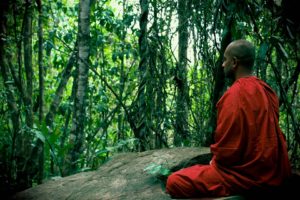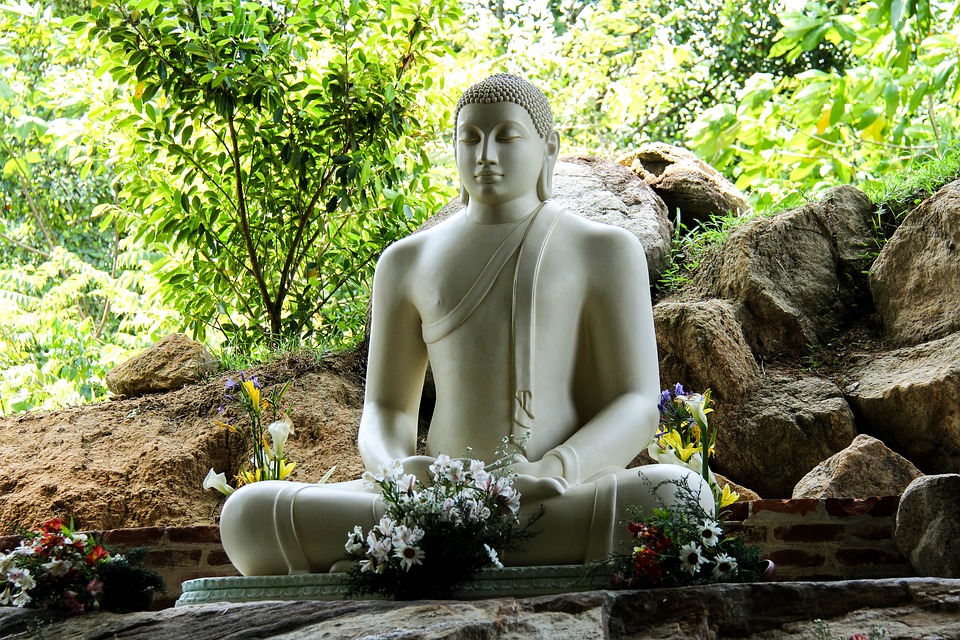Buddhist texts tend to be quite diverse, with some stories overlapping, some contradicting, and others seeming downright independent of another doctrine. The legend of Buddha’s visit to Sri Lanka in the Sinhala tradition stands out as a particularly inconsistent view.
Although nothing in the Pali Canon indicates that Goutama Buddha traveled to Sri Lanka, the Sinhala Buddhist text Mahavamsa describes three visits to the island. There are several inconsistencies between mainstream Buddhist beliefs and the Mahavamsa. Although Buddhism is known for its pluralism when it comes to doctrine, the Mahavasma paints a picture of a Buddha that is quite different from what one might expect.
Although some early Buddhist doctrine uses the term jina (Warrior) when referring to the Buddha, this is typically meant in a purely figurative sense. Virtually all Buddhist schools recognize the value of non-violence. However, the Mahavamsa portrays the Buddha as a literal warrior.
According to this legend, the Buddha recognized the value of his teachings and was able to see far into the future to realize that the only place that his words would last into the far future was the island of Lanka. The Mahavamsa claims that the Buddha started his first visit to the island by assaulting the Yakkas with natural phenomenon until they agreed to vacate their lands.
The second visit brought the Buddha to Nagadipa (northern Lanka).
He had traveled there to break up an imminent fight between two Nagi princes over a throne. However, instead of using skillful means and compassion, the Mahavamsa claims the Buddha manipulated natural forces, and that the thrown was offered to him out of fear.
The final visit of Buddha came via an invite to Kelaniya by a Naga prince who had met Buddha during his previous visit. This is when Buddha is believed to have left his footprint on Adam’s Peak.
 The Mahavamsa goes on to claim that the Buddha had arranged for safe passage of the first king of Sri Lanka, Vijaya. It is alleged that Vijaya had arrived in Lanka on the day of Buddha’s passing. Ironically, the Mahavamsa later goes on to say Buddhism was introduced to Sri Lanka about two centuries after Vijaya’s arrival.
The Mahavamsa goes on to claim that the Buddha had arranged for safe passage of the first king of Sri Lanka, Vijaya. It is alleged that Vijaya had arrived in Lanka on the day of Buddha’s passing. Ironically, the Mahavamsa later goes on to say Buddhism was introduced to Sri Lanka about two centuries after Vijaya’s arrival.
The spiritual value of this doctrine
Historical accuracy aside, the spiritual value of this doctrine is questionable. Although it shows a great deal of creativity and possibly makes for an important part of Sinhala Buddhist theological history, it seems to cast aspersions on many of the key factors of Buddhist thought.
Taking a universal religion based on non-violence and acceptance and transforming it to an ethnically specific faith may be considered a harmful re-interpretation of the Dharma by some, irrelevant by others. Buddhism is meant to adapt to its surrounding culture, and for this reason, there is a great deal of latitude in how things may be interpreted. However, it seems as if the Mahavamsa was less an evolution and more a re-organization of Buddhist doctrine to fit the needs of a single ethnic group.
Meaning of the Mahavamsa
Of course, it may be that the meaning of the Mahavamsa was simply lost or distorted in translation. It may even be that such a radical portrayal of the Buddha was deemed inappropriate by the more mainstream schools of Buddhist thought and this is why the Mahavamsa is seen as incredulous outside of Sinhala Buddhism. These are questions worth considering, as we should not simply deny the claims of one group because they are not consistent with our own beliefs.





